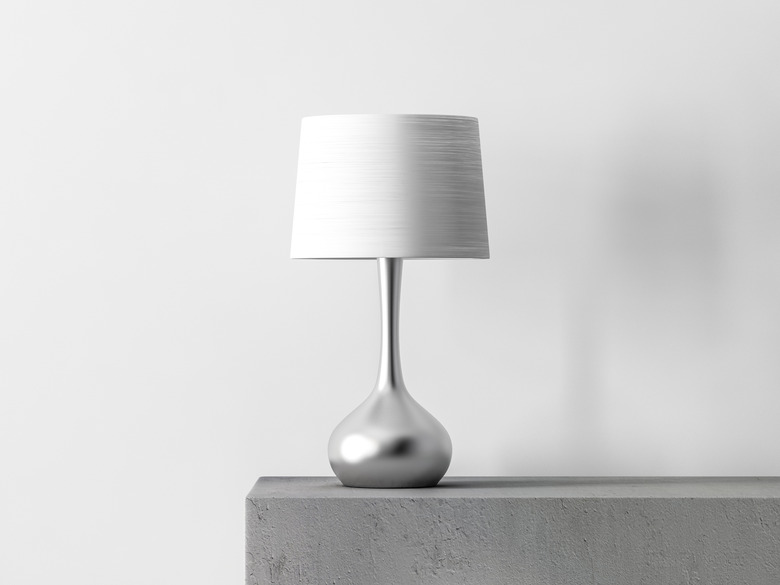What Is A Lampshade Spider Fitting?
We may receive a commission on purchases made from links.
Lampshades require a means to fit atop a lamp, and the most common option is a spider fitting. A lampshade spider fitting is the series of equidistant thick metal wires or arms that go from the top perimeter of the shade toward the center, where they all connect to a horizontal washerlike ring. That ring allows the shade to sit perfectly centered on the lamp harp, or the metal arch over the light bulb in a typical table lamp. Not all lamps have harps, and not all lampshades have spider fittings, so it's important to ensure you buy the right type of shade for a specific lamp when replacing a lampshade.
Spider Fitting Basics
Spider Fitting Basics
Spider fittings are the most common lampshade fitting for all types of lamps that sit on the floor, desk, or table. They're found on various shapes of shades as well, including cylindrical or drum shades, rectangular or square shades, and bell-shaped shades.
Pendant and swag lights that hang from the ceiling may need a conversion kit if you'd like to use a replacement shade designed for a floor lamp or table lamp. This is because swag and pendant light sockets hang upside down compared to the sockets in table lamps and floor lamps, so a typical harp structure won't work, or the shade would sit upside down as well.
A conversion kit has a space to connect the spider fitting above the upside-down light socket, so any lampshade with a spider fitting and that fits the pendant or swag lamp works with the conversion kit. Some of these kits are just specialized plug-in light sockets designed for DIY pendant and swag lights, so there's no need to hard-wire the kit into your home's electrical wiring.
Other Lampshade Fittings
Other Lampshade Fittings
The other two main lampshade fitting types are clip-on shades and uno fittings. A clip-on shade has two wire loops centered within the shade that bend slightly to attach directly to a light bulb rather than to a harp. These are for lamps that have no harps and are most common for chandeliers and other small lamps designed as decorative home accents rather than as task lighting or room lighting. Each clip-on fitting is designed to fit a specific bulb size or shape, and it's easy to tell which size the shade fits by looking at the size of the loops.
An uno fitting is similar in style to a spider fitting in that there's a series of thick, metal wires or rods that connect to an inner ring. The difference between a spider fitting and an uno fitting is that the uno fitting fits on the light socket itself, so the actual fitting is below the light bulb and not above it or on a harp. The hole in the ring in an uno fitting is wide enough to go around a light socket, while the hole in a spider fitting is much smaller. If the hole isn't large enough to go around a light socket, it's a spider fitting; there's no need to even measure them to tell the difference.
